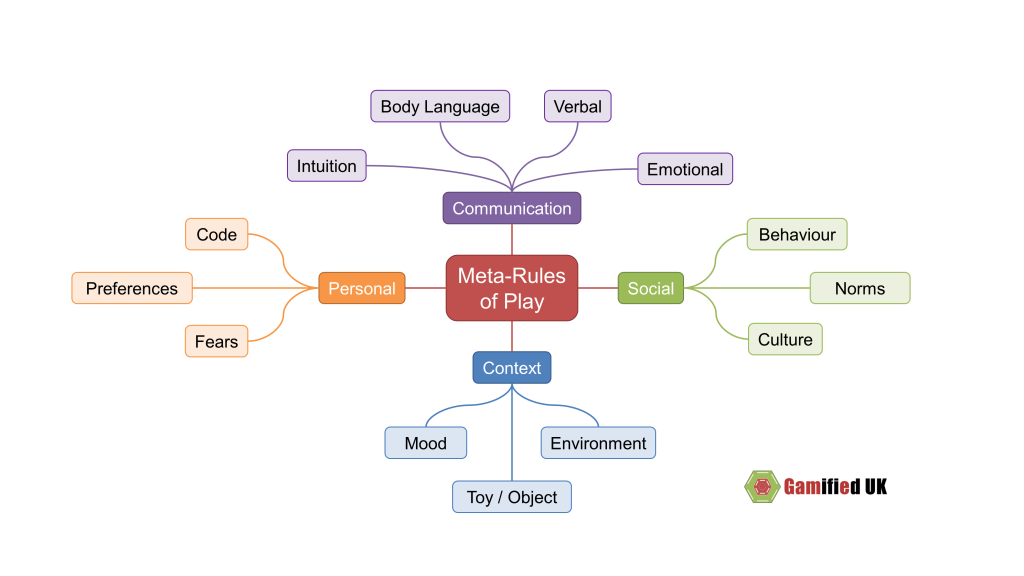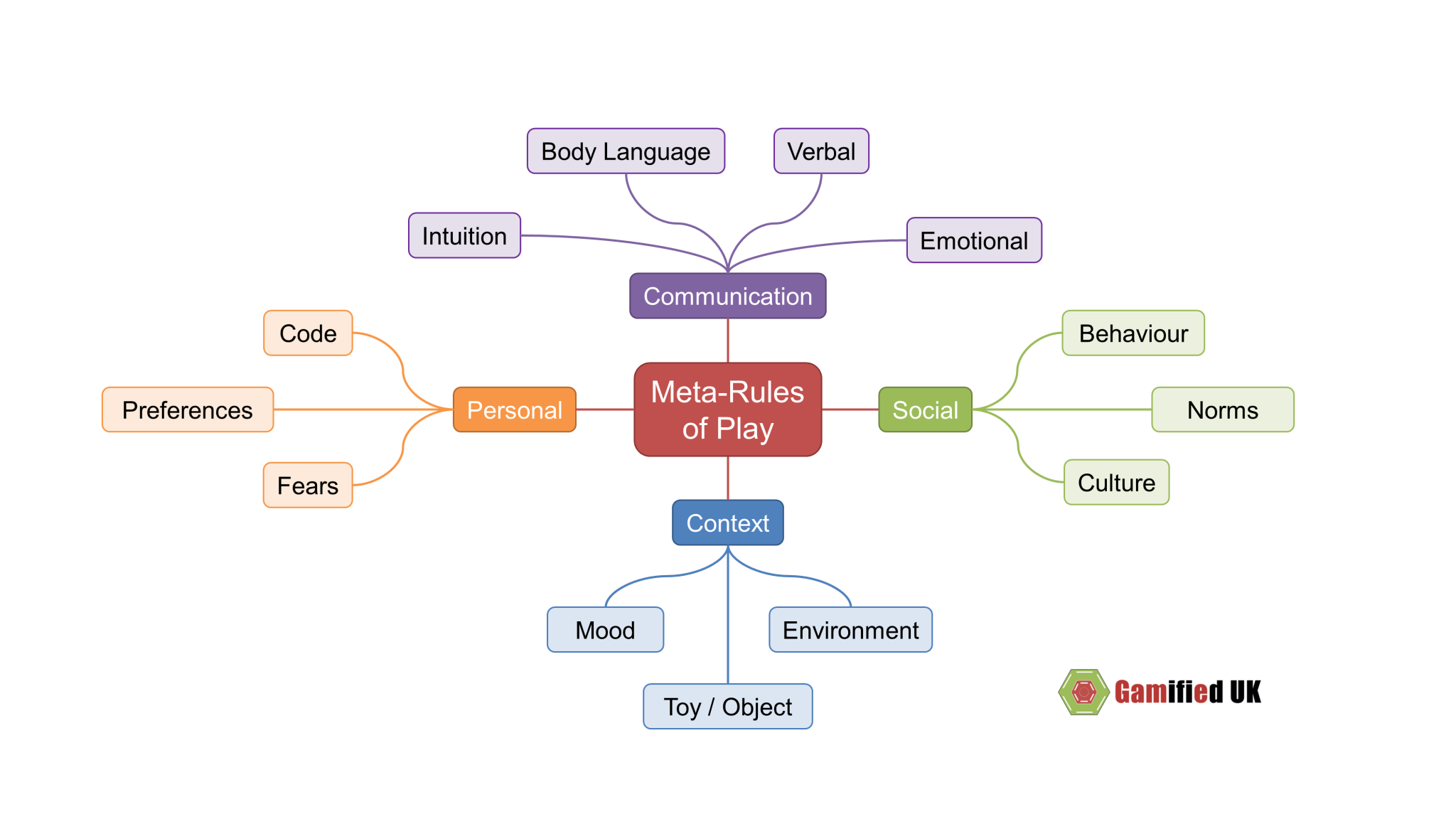In my last blog, I introduced the concept of Meta-Rules. These were the non-system or inherent rules that actually guide how people play.
I spoke about them rather abstractly, describing them in the following way
These [meta-rules] rules are beyond what you would consider written or system imposed rules. These are fluid rules that can change moment by moment. These are the rules that define how play unfolds. These are the unspoken rules that children manage to communicate to each other when they are playing, where the situation is constantly changing, but they always seem to be able to adapt to the changes without fuss
I’ve spent the last couple of weeks considering what meta-rules actually consist of, how they could be categorised in a more concrete way. What follows is where I have got to with that process! These, like meta-rules, are not fixed in stone – rather my best stab at them that could change at some point!
They are broken down into four categories; social, contextual, communication and personal.
Communication
Communication plays an enormous part in collaborative play. I have identified four types that help to control play.
- Verbal
- The most obvious form of communication – yelling instructions or updates!
- Intuition
- Sensing how others are reacting to you and those around them, that feeling that you know something has changed based on subtle hints from others.
- Body Language
- Almost as unsubtle as verbal communication, you can tell what other people playing are feeling with how they appear. Crossed arms, looking unhappy, looking to the left to indicate where you should go next etc.
- Emotional
- A layer on top of other types of communication and similar in style to intuition, emotional communication is understanding the emotional subtext of other types of communication. They may communicate in a happy way, but there could by other underlying emotions.
Social
Social meta-rules are more about what society expects. When playing there are just some things that others don’t expect – based on social rules. Whilst I have broken these down into three headings, they are all linked. There is an expected behaviour based on culture and the norms for that culture. For instance, if you are play acting mummy’s and daddy’s, it would be very unexpected by most cultural norms and standards for one player to jump up and start pretending to shoot all of the others!
Context
Play is contextual, it can change depending on where people are, what they are playing with and how they feel.
- Environment
- What are the surroundings whilst playing. How does that affect what can and can’t be done. It’s the difference between playing catch in a field and catch on a cliff edge!
- Mood
- The mood of the people playing can change rapidly, this can then change the emphasis of play and how others react to play. If you are playing alone with dolls and are happy, you may be making up stories of going to the beach. If you are sad or have been traumatised, your play acting may take a darker turn or start to replicate things that have traumatised you.
- Toy / Object
- if you are playing with a toy of some sort, that can drastically change what you are playing. It may be fun to bounce a ball of a wall, but less so if you are then handed a wooden block!
Personal
Everyone is different and what they find enjoyable or fun is also very different. Each person has their own preferences, personal code (ie moral or code of conduct) and of course fears.
- Code
- This is what a player is prepared to do base don their own moral judgement. Some kids may not want to be involved in certain types of play, just like adults may not! This will guide how they react during play and the ever changing meta-rules!
- Preferences
- As I say, not everyone is the same. Some may like to play with a ball, others would prefer to act out plays with dolls.
- Fears
- Fear is a great motivator. That example of playing catch on a cliff. I would not do it, but some might!

There are bound to be many more Meta-Rules of play, this is just me scratching the surface and trying to make some order of it. I would love to hear your views and other categories or sub- categories that you feel subtly control how people play!
Similar Posts:
- Playing with Thought Experiments and Meta-Rules
- Gamification: Rules Rule, but Shouldn’t Rule Everything.
- Mischief Theatre and the Contract of Play

Also published on Medium.


Interesting analysis. I fully agree on the idea of meta rules but I found it difficult to see especially communication as rule. (Sorry, I haven’t read your previous blog).But if you define meta rules such as kind of different means controlling play, then it is more understandable. Commucation is means to communicate formal and informal rules or to express agreement or disagreement, for example.
Some points came into my mind:
Cathegories are also interlinked with each other: social norms control communication and are dependent on the context etc.
Social norms may be also group norms of the players if they have played together or othervise been as a group some time.
Possibly you would include in the personal preferences also the negative side: what some especially don’t want to play. However, it may also been as a separate aspect.
Communication is used to control and adapt the rules of play in this instance.